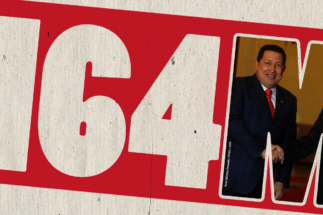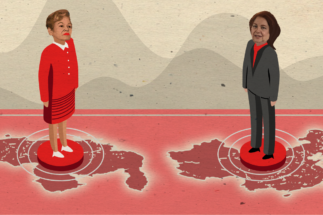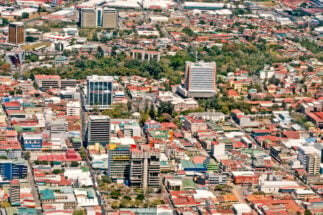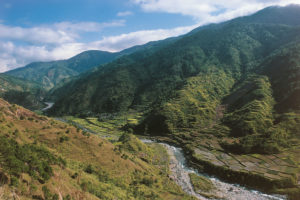When nearly $50 billion in funds are at stake – far more than the reserves of most Latin American countries – the request for a large office to handle such a volume seems more than logical, it seems necessary.
In 2010, when Venezuela was still selling at least two million barrels of oil a day, it received such a request from China, its main and privileged lender. The Venezuelan government obliged and unhesitatingly allocated US$164 million for the “remodelling, expansion and equipping” of an office to oversee the multi-million dollar bi-national projects that, in several cases, cost less than the office itself.
The space was 633 square metres and occupied the entire 23rd floor of the Centro Financiero Latino, an office building located in the centre of Caracas, on Urdaneta Avenue. The building houses both public and private entities and, Covid-19 lockdown measures notwithstanding, usually has an incessant flow of people coming in and out.
Official documents from 2009-2012 show that the refurbishment project had exaggerated resources and was executed in just four months, far quicker than the time it took the government to complete other works financed with Chinese funds. Armando.info has had access to these documents, which have been processed and analysed by the Latin American Centre for Investigative Journalism (CLIP), with Diálogo Chino providing additional reporting as part of the series Venezuela’s Dance with China.
The $164 million refurbishment was paid for through an ‘operating expenses’ sub-account of the loan scheme. But despite its astronomical costs, today the mystifyingly expensive office lies in disrepair.

Multimillion-dollar bureaucratic decoration
A decade after that costly request was undertaken, the office resembles any other Venezuelan public administration building from the time of the self-styled Bolivarian Revolution. Apart from a photo-banner adorned with the images of strongmen Hugo Chávez and Chinese counterpart Xi Jinping, the space offers few clues as to where the money went.
In fact, everything looks stagnant in a bureaucratic 1980s décor.
The refurbishment was carried out in 2010, two years after the joint office to oversee binational projects was inaugurated, in May 2008, with a simple protocolary act that went largely unrecorded. At that ceremony were Rafael Isea, then finance minister and president of the Economic and Social Development Bank of Venezuela (Bandes), and Zhao Jianping, then deputy assistant governor of the China Development Bank (CDB) and later its vice governor.
Both represented the institutions that managed the projects of the Venezuelan-Chinese Joint Fund, formally approved by then president Chávez in November 2007. The fund had an initial capital of US$6 billion that would eventually rise to US$30 billion. In 2010, with the creation of a second Sino-Venezuelan fund called the Large Volume and Long Term Fund, another $20 billion of project finance was injected.
It is not known exactly what the space looked like before the refurbishment, which according to documents was carried out in 2010. Some details of the redesign remain a decade later, such as gold lettering affixed to the wall with the official name of the treaty, translated into Mandarin. Others were incorporated later, such as the two-metre-wide poster of Chávez and Xi that hangs in the reception area, emblazoned with a phrase from the Bolivarian leader.
The office refurbishment was so disproportionately expensive that it even cost more than some of the most important works from the China agreements it was supposed to oversee.
Such is the case of the Petrocasas factory, which made housing prototypes from polyvinyl chloride (PVC) profiles, a plastic produced by the petrochemical industry. The plant in Guacara, Carabobo state, received US$133 million in finance. Another project, the assembly of 925,410 mobile phones by the Venezuelan state telecommunications company (Vtelca), received $118 from the Chinese Fund.
A similar multi-project agreement with Belarus resulted in the construction of a Mazven truck factory and a Veneminsk tractor factory, both in the plains state of Barinas, with agreed budgets of US$132 and $55 million dollars, respectively.

A hurried renovation
According to an account of the project drawn up by Pablo José González Hernández, then executive manager of Bandes Development Funds, and Edmeé Betancourt, then president of the bank, the remodelling of the office represented a requirement to “comply with the provisions of the agreement on Large Volume and Long Term Financing” which “establishes the creation of a Joint China Venezuela Office”.
However, in that plan, published in Official Gazette 39.511, there is no express mention of the extravagant cost the office would need to follow up on the projects resulting from the second $20 billion grant fund, signed on 10 September 2010. In fact, the documents twice state that the space belonged to the management headed by Gónzalez Hernández, when in fact it was an area already set aside for administration of the Chinese Fund.
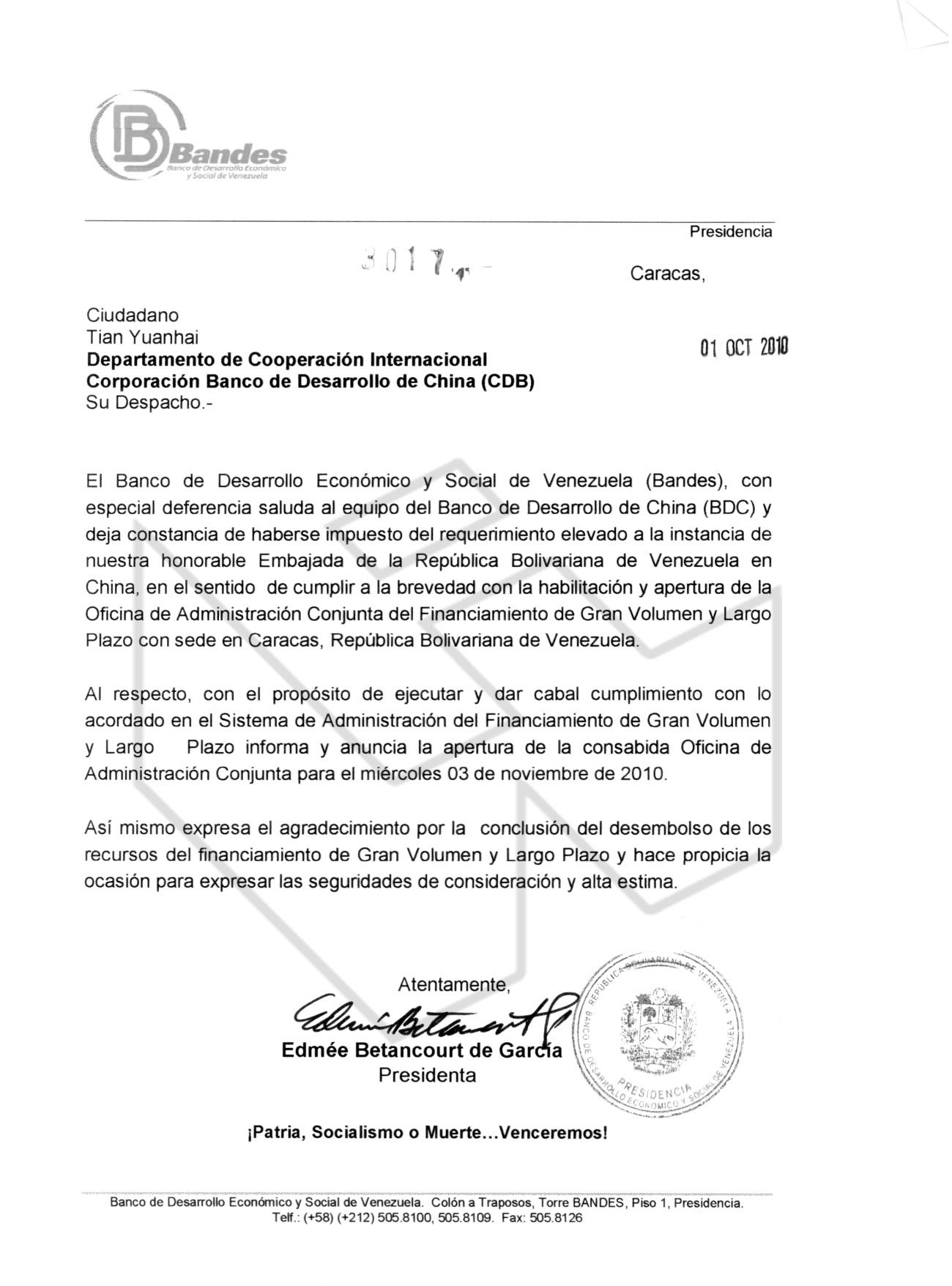
The refurbishment work was carried out “in a hurry”, starting in September, with 2 November 2010 set as the date for reopening. The Joint Office was finally reopened on the evening of Friday 17 December. The ceremony was attended by minister of planning and finance Jorge Giordani, who highlighted the achievement of having a place for “strict monitoring of the progress of the projects agreed between the two countries”. It constituted, as he said in his speech, “an element of greater security and peace of mind for the Chinese partners and for the Venezuelan government”.
At that point, the budgets for the works financed with the joint funds had to be approved by the Chinese authorities and most of the contracts went directly to Chinese state-owned companies such as Sinohydro, Citic Construction or China Machinery Engineering Corporation (CMEC).
The chamber of secrets
Access to the China-Venezuela Joint Office is restricted. If someone tells reception at the Centro Financiero Latino that they are going to the 23rd floor (where the office is located), security warns that “only authorised personnel” can go there. But once inside, it is possible to get to that floor and see a space divided into three offices that have a combined footprint of 633 square metres.

It was an area inaccessible even to staff members of Bandes, which has its headquarters near the Oficina Conjunta, on another avenue in the centre of Caracas. A former bank worker says that everything was very “hermetic and delicate”. In the lobby, one can see a painting of a horse and a long dark brown sofa with a broken arm. Foam padding discreetly peeks out. On either side of it are four wooden chairs that match a wide table with elegant legs, on which four solitary books of Venezuelan government propaganda rest. The furniture contrasts heavily with the typical grey secretarial booth and the metal and plastic seats in the reception area.
It is in this welcome room that the only signs of life appear. Between the flags of China and Venezuela on the flagpole and below the name of the pact, there survives an aloe vera bush in a clay pot with a red ribbon tied to one of its stalks. Next to it is another sad-looking plant of tropical origin. These plants are the lucky ones. In the neighbouring pots there is nothing left but dry, hard soil.
The interior of the Joint Office is less bright. Footsteps clatter as you walk along its unoccupied spaces. Some lamps flicker, just enough to notice the dirt stains on the lower part of the white walls. A homemade shower towel hangs on one of the doors of the ladies’ room, and in the gents’ room there’s an open dishwasher with a sponge atop that doubles as soap for washing hands and maybe lunch boxes.
The other two large areas of the office on the 23rd floor are dark. From the corridor outside it gives the impression that it has been abandoned, with almost no decorative objects and basic furniture that looks like it was installed in a recent move.
The cost per square metre of this office, in the heart of the the capital of Venezuela – a country plunged into an unprecedented economic crisis in a country – was US$259,000, nine times higher than that of Hong Kong, considered the most expensive price of office space per square metre anywhere in the world, according to the Global Property Guide.

Bad luck
At the request of Hugo Carvajal, then deputy minister of the Integrated Criminal Investigation System and now a dissident of chavismo-madurismo who is wanted by the US justice system, the Public Prosecutor’s Office began an investigation in 2012 into alleged irregular payments of US$84 million from the Chinese Fund for food plans. The investigations led to the arrest of five Venezuelans involved in the scheme and their trial on 29 May 2014, along with three other former officials.
Among them was Pablo José González Hernández, who was executive manager of the Chinese Fund and of the department of Development Funds at Bandes. It was precisely in that latter position that he signed the documents requesting the remodelling and equipping of the Joint Office. Armando.info tried to reach González Hernández to get his version of events but was unable to locate him.
The operation was part of a brief anti-corruption crusade carried out by the national government, through a plan called Mission Efficiency or Nothing, created in April 2013 to detect and investigate the embezzlement of public funds. On 13 July of the same year, Nicolás Maduro made a statement on the Bandes case and claimed, without showing evidence, that the detained ex-officials were members of Primero Justicia, one of the main political parties of the Venezuelan opposition.
This scandal was not the only one associated with Bandes. Alejandro Andrade, Chávez’s notorious bodyguard who was also president of the bank between 2008 and 2010 was sentenced to ten years in prison for money laundering in the US. He presided over Bandes between 2008 and 2010, when the Venezuelan-Chinese Joint Fund (2007) and the Large Volume and Long Term Fund (2010) were formally signed. Similarly, Rafael Isea, a star chavista official who inaugurated the first office of the agreement as president of Bandes and finance minister (he was also governor of Aragua state), has been living in the US for some time.
In September 2018, during the tenth meeting of the High-Level Joint Conference on Financial Cooperation between China and Venezuela, held in Beijing, the minister of economy and finance, Simón Zerpa, revealed that a review had been formalised “of a very important element regarding the operation of the joint office between the Venezuelan Social Development Bank (Bandes) and China Development Bank (CDB)”.
He did not specify which element he was referring to, nor did he later make any statement on the matter. It was yet another sign of the Venezuelan government’s secrecy regarding the headquarters of the Chinese Fund. The multimillion-dollar budget paid for with Venezuelans’ money made it the most expensive office in the country – perhaps even the world.

*This investigation is based on a trove of documents obtained by Armando.info (Venezuela), which were processed and analysed in partnership with the Latin American Centre for Investigative Journalism (CLIP) and with additional reporting by Diálogo Chino.
